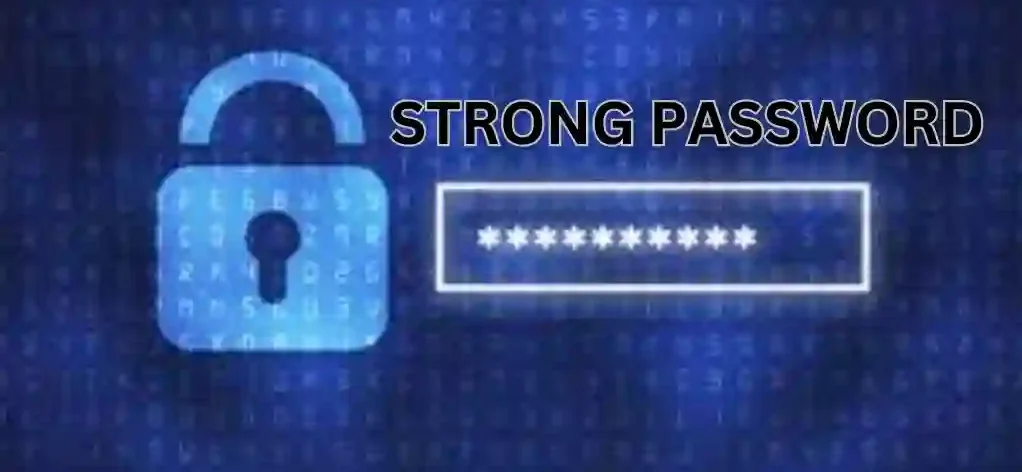In today’s digital world, passwords serve as the first line of defense against cybercriminals trying to access personal data, online accounts, and sensitive information. From email to social media, banking, and work-related platforms, a secure password is essential to protecting your privacy and security. However, with the growing number of online accounts, it’s becoming increasingly challenging to create and manage passwords that are both strong and easy to remember. In this article, we’ll explore how to create strong passwords, best practices for keeping them safe, and tools you can use to streamline password management.
Why Strong Passwords Matter The Increasing Risk of Cyber Attacks
As cyber threats become more sophisticated, relying on weak or repetitive passwords can put you at significant risk. Hackers often use automated tools to crack passwords, employing methods like brute force attacks (trying every possible combination) or dictionary attacks (using common words or phrases). According to a report by Verizon, 81% of breaches in 2020 were the result of compromised passwords, underscoring the importance of choosing robust passwords.
The Dangers of Weak Passwords
Weak passwords—such as “123456,” “password,” or even your name—are easy for attackers to guess, and they often give them access to all your accounts. Since many people reuse the same password across multiple platforms, a breach in one account can lead to cascading vulnerabilities in others. Creating unique and strong passwords for each account significantly reduces your risk of becoming a victim of identity theft, financial fraud, or data breaches.
Characteristics of a Strong Password
A strong password is one that is difficult for both humans and computers to guess. Here are the key features of a robust password:
- Length Matters
One of the most critical factors in creating a strong password is length. A longer password is exponentially harder to crack than a shorter one. Passwords that are at least 12-16 characters long are considered much stronger. Avoid using common words or phrases, and instead, focus on combining random characters to increase the length and complexity of your password.
- Avoiding Common Words or Patterns
Passwords based on dictionary words, personal information (e.g., names, birthdays), or predictable patterns (e.g., “qwerty” or “abc123”) are among the first guesses that hackers try. This is why it’s crucial to avoid these types of passwords altogether. Instead, try using a random mix of characters that doesn’t form recognizable words or sequences.
- Use a Combination of Characters
A strong password includes a mix of the following types of characters:
- Uppercase letters
- Lowercase letters
- Numbers
- Special characters (e.g., !, $, #, %)
The more diverse the character set, the harder it is for attackers to crack. A password like “G%r8%3H!qz5b” would be much harder to guess than “Password123.”
- Avoid Personal Information
Avoid using easily accessible personal information in your passwords, such as your name, address, phone number, or pets’ names. Cybercriminals can often find this information on your social media profiles or other public records. Instead, focus on using random combinations or phrases that only you would understand.
- Passphrases: A Strong Alternative
An effective method for creating strong passwords is using a passphrase—a random sequence of words or a sentence that’s easy for you to remember but difficult for others to guess. For example, “BlueBird$Wishes@Ocean2024” could be a strong passphrase. It’s both long and includes a variety of characters. For extra security, use a combination of unrelated words and add numbers and special characters to further increase the complexity.
Best Practices for Keeping Your Passwords Safe
Creating strong passwords is only part of the equation. To fully protect your online security, you must follow best practices for managing and safeguarding your passwords.
- Enable Two-Factor Authentication (2FA)
Two-factor authentication adds an extra layer of security by requiring you to provide two forms of identification when logging in—typically, something you know (your password) and something you have (a smartphone or hardware token). Enabling 2FA makes it significantly harder for cybercriminals to access your account, even if they manage to obtain your password. Common forms of 2FA include:
- SMS-based verification codes
- Authentication apps like Google Authenticator or Authy
- Hardware keys such as Yubikey or Titan Security Keys
- Use a Password Manager
With so many accounts and passwords to manage, it’s easy to fall into the trap of using the same password across multiple platforms or resorting to weak, easy-to-remember passwords. A password manager helps solve this issue by securely storing all your passwords in one place, so you don’t have to remember each one. Popular password managers include LastPass, 1Password, and Bitwarden. Most password managers also offer features like password generation (to help you create complex passwords) and autofill (to automatically fill in your passwords when logging into websites), which can further simplify password management. Password managers encrypt your data with strong encryption, meaning that even if hackers gain access to the service, they won’t be able to read your passwords.
- Don’t Reuse Passwords
Reusing passwords across different platforms is a risky habit, as it can lead to a chain reaction of breaches. If one service is hacked, all your accounts that share the same password are potentially at risk. Using a unique password for each account ensures that if one account is compromised, the others remain safe. A password manager makes it easy to generate and store unique passwords for each account, so you don’t have to worry about remembering them all.
- Update Passwords Regularly
Even the strongest password can eventually be compromised. Regularly updating your passwords (e.g., every 3-6 months) helps ensure that if a breach does occur, attackers won’t have access to your accounts for long. Additionally, if you hear of a service you use experiencing a data breach, change your password immediately for that account. If the breached service does not support 2FA, enabling it after a password change is a good precautionary step.
- Be Cautious About Phishing Attacks
Phishing attacks are one of the most common ways hackers gain access to passwords. Phishing occurs when an attacker tricks you into revealing your login credentials by pretending to be a legitimate organization, often through deceptive emails or websites. To protect yourself:
- Never click on suspicious links or download attachments from unknown sources.
- Verify URLs to ensure they lead to the correct website (look for HTTPS and a lock symbol).
- Be cautious with public Wi-Fi and avoid logging into accounts when using unsecured networks.
- Monitor Your Accounts for Suspicious Activity
Stay vigilant about your accounts by regularly checking your activity logs for unusual sign-ins or changes. Many services provide logs of where and when your account was accessed. If you see activity you don’t recognize, take action immediately by changing your password and enabling 2FA.
- Avoid Sharing Passwords
Never share your passwords with anyone, even trusted friends or colleagues, unless absolutely necessary. In such cases, it’s better to use a password manager’s sharing feature, which allows you to securely share passwords with others without revealing the actual password.
Tools to Help You Create and Manage Strong Passwords
Creating and managing strong passwords doesn’t have to be difficult. Here are a few tools that can help:
- Password Generators
Many password managers offer built-in password generators to help you create long, random, and secure passwords. If you’re not using a password manager, you can also find free online password generators that can help you create strong, unique passwords.
- Password Managers
As mentioned earlier, using a password manager can significantly reduce the complexity of managing passwords. Some of the best password managers include:
- LastPass
- 1Password
- Dashlane
- Bitwarden
These tools not only store your passwords securely but also help you create complex ones and keep track of them.
- Two-Factor Authentication Apps
Apps like Google Authenticator and Authy are free tools that generate time-sensitive codes, offering an added layer of security. You can use them with your online accounts to enable two-factor authentication and protect your accounts from unauthorized access.
Conclusion
Strong passwords are essential for protecting your online accounts and personal information from cybercriminals. By following the tips outlined in this article—such as using long, random passwords with a mix of characters, avoiding personal information, and enabling two-factor authentication—you can significantly reduce the risk of falling victim to a cyberattack. Remember, your password is only one part of your overall digital security strategy. Using password managers, staying vigilant about phishing attempts, and regularly updating your passwords will help ensure your data remains safe in an increasingly interconnected world. Protecting your passwords is not just a matter of security; it’s a matter of safeguarding your identity and privacy in the digital age.





